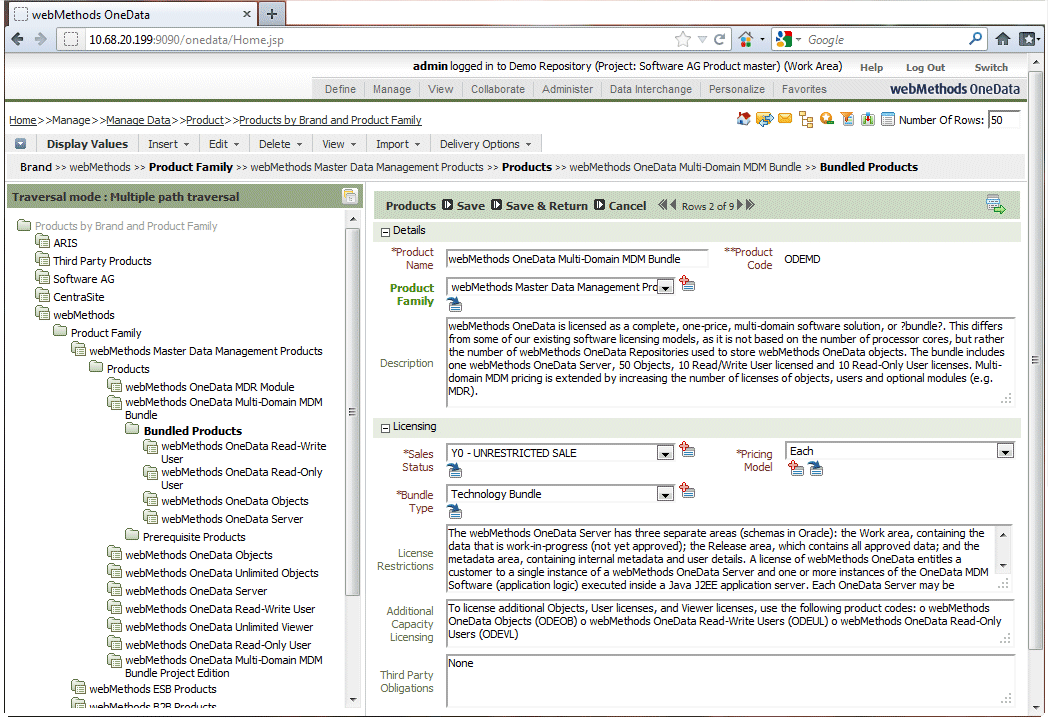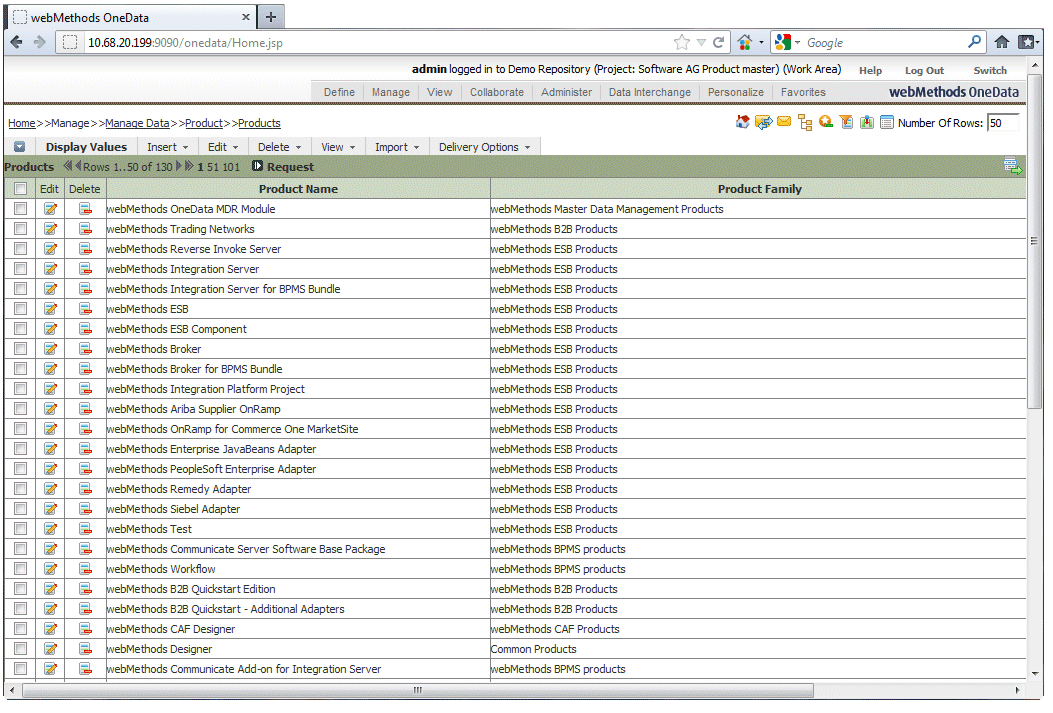OneData
OneData reconciles, cleanses, synchronizes, and stores all your master data, as well as all your data definitions, structures, workflow, processes, and rules. Enterprises deploy OneData as the MDM solution to improve process performance and enable better business decisions.
OneData provides a repository in which to store your master data, and an Internet browser-based user interface that lets you search for and work with that data. It also provides the capability for data interchange with other systems using mechanisms such as schedulable data interchange jobs for importing and export data in multiple formats and REST-based service layers calls.
OneData has an open, extensible data model. You can import your existing model, or use built-in templates. Any domain or subject area that is in the data model becomes part of the solution; there are no proprietary structures. You can easily modify or extend the model at any time, and changes are reflected immediately in the OneData user interface.
OneData supports multiple MDM architectural styles. These architecture styles include centralized, consolidated, coexistence, and hybrid, as well as combinations of these styles. OneData supports both operational and analytical MDM use cases.
OneData interacts with the Software AG products described below.
Product | Description |
Locate | Provides address reference data for more than 240 countries worldwide, verifies international addresses, checks address data for errors and omissions, and fills in missing address attributes when needed. Performs geocoding. |
Integration Server | Executes services called by OneData (for example, to perform data validation or enrichment). |
Universal Messaging | JMS provider for data acquisition and deployment in real time. If you modify data in OneData, OneData can publish a message to JMS topics or queues for subscribers to pick up. Conversely, OneData can subscribe to JMS topics and queues for messages about data changes in back-end systems such as CRM. |
Terracotta | Maintains in-memory databases, which are cached versions of data objects. When you enable caching for a data object, OneData stores the records associated with the object in cache as well as in the release area. Caching improves the performance of REST services that use the data object, because the services interact with the cache instead of the database. |
webMethods Business Process Management (BPM) | Define advanced workflow processes. |
OneData also integrates with any industry-standard enterprise service bus (ESB) or service-oriented architecture (SOA) environment, to share and reuse the same master data both in operative systems and in data warehousing and reporting systems.
OneData supports end-to-end master data life-cycle capabilities, such as:

Creation and maintenance of data through the
OneData user interface.

Modeling and configuration, with no coding needed.
OneData implementations typically can be accomplished in a matter of weeks.

Data acquisitions from and data deployment to data sources such as databases, flat files, and XML files.

Hierarchy management.

Data change request and approval workflows.

Data quality (that is, cleansing, matching, and survivorship).
OneData can also integrate with third-party data quality tools.

Data security, auditing, and reporting.
The illustration below shows a hierarchy in the OneData user interface. Details for a node in the hierarchy appear on the right.
The illustration below shows a data grid whose contents reflect a data object created in OneData.

